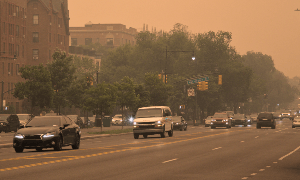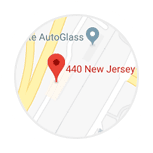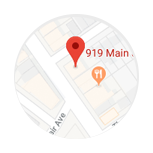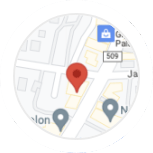BLOG
Liability for Accidents in Smokey Conditions
 Driving in smokey conditions can pose significant risks to those on the road. Reduced visibility and poor driving conditions can increase the chances of getting into an accident.
Driving in smokey conditions can pose significant risks to those on the road. Reduced visibility and poor driving conditions can increase the chances of getting into an accident.
If you were injured in a crash while road conditions were not ideal due to smoke, you may be eligible for compensation.
Call our motor vehicle collision attorneys in New Jersey today to discuss your claim. We offer a free consultation to see what legal options may be available to you. There are also no upfront fees for our services.
How Does Smoke Affect Visibility?
When smoke from wildfires or other sources fills the air, it creates a dense haze that can significantly reduce visibility on the roads.
During the daytime, the smoke can scatter sunlight, leading to a diffused and muted lighting effect. The reduced contrast and clarity of the surroundings can make it difficult for drivers to judge distances accurately, recognize road signs or identify potential hazards.
At night, the situation can become even more dangerous. When headlights or streetlights illuminate the smoke, they reflect the light back, creating a phenomenon known as “light scattering.” This scattering effect can create a blinding glare, severely impairing a driver’s vision and making it extremely difficult to see the road.
The combination of reduced visibility and impaired visual perception due to smoke can have severe consequences on a driver’s ability to react appropriately to unexpected situations. Hazards that would typically be visible and allow for evasive action might go unnoticed until it is too late to avoid a collision.
The smoke in the air can also affect the performance of certain safety features and technologies on a vehicle. For example, smoke particles can interfere with the functioning of optical sensors used in advanced driver assistance systems (ADAS), such as lane departure warnings or automatic emergency braking systems. This interference can reduce the reliability of these systems and further increase the risk of an accident occurring.
How is Liability For an Accident in Smokey Conditions Determined?
Determining liability for an accident in smokey conditions depends on various factors. Typically, liability is established based on negligence. This means that the party responsible for the accident failed to exercise reasonable care, resulting in injuries to others.
Drivers have a duty to adapt their driving behavior to road conditions. This includes adjusting speed, maintaining a safe distance from the vehicle ahead and using headlights or fog lights when necessary. If a driver fails to take appropriate precautions in smokey conditions and causes an accident, he or she may be held liable for damages.
In some cases, liability for accidents in smokey conditions may fall on government entities responsible for road maintenance and safety. If the government was aware of the hazardous conditions caused by smoke but failed to take appropriate measures to warn or protect drivers, they might be held accountable for resulting accidents and injuries.
If an accident occurs due to smoke originating from a specific property, such as a controlled burn or industrial facility, the property owner or manager may be held responsible if their negligence or improper practices contributed to the accident.
It is important to note that although another party may be liable for your damages, accident victims must file a claim with their own Personal Injury Protection (PIP) insurance to recover compensation for medical bills, lost wages and other damages. Once you exhaust your PIP insurance, then you can file a claim with the liability insurance of the at-fault party.
Tips for Driving in Smokey Conditions
While accidents in smokey conditions can be difficult to avoid, taking precautions can significantly reduce the risk. The following are some tips to remember while driving in smokey conditions:
- Slow down – Drive at a reduced speed as it allows you to maintain better control of your vehicle and react promptly to hazards.
- Keep a safe following distance – Leave enough space between your vehicle and the one in front of you. The reduced visibility may make it harder to judge distances accurately, so a longer following distance is crucial.
- Use your headlights or fog lights – Turn on your headlights, even during the daytime, to increase your vehicle’s visibility to other drivers. If necessary, use fog lights to improve visibility in the immediate vicinity of your vehicle.
- Avoid distractions – Minimize distractions inside your vehicle, such as using mobile devices or adjusting the radio. Focus on the road and remain alert to potential hazards.
- Use caution at intersections – Approach intersections with caution and be prepared for unexpected situations. Poor visibility can make it difficult to see oncoming traffic or pedestrians.
- Use your turn signals – Use your turn signals well in advance to alert other drivers of your intentions. Clear and timely communication can help prevent accidents in smokey conditions.
If you are involved in a collision while conditions are smokey, you should remember to take precautions when getting out of the car as well. For example, it might be in your best interest to dial 9-1-1 from inside your vehicle.
Injured in a Crash? Call Us Today
If you were the victim of another person’s negligent actions in poor driving conditions, call our knowledgeable attorneys today.
We can discuss your claim during a free consultation to see what legal options may be available to you.
Call (800) 518-0508 to learn more.










